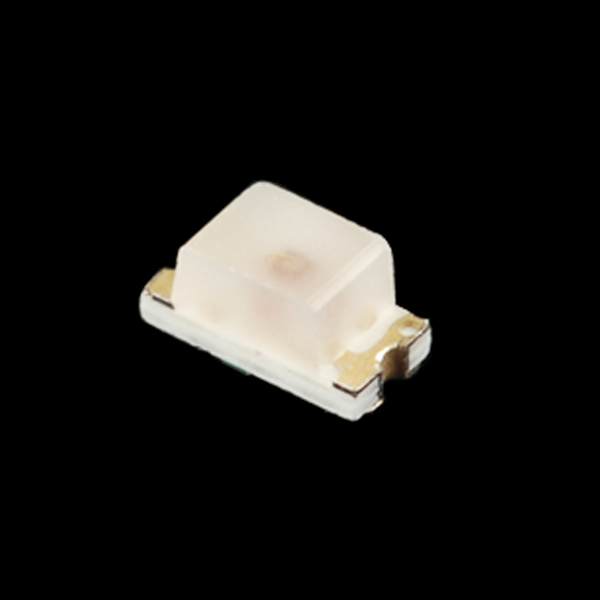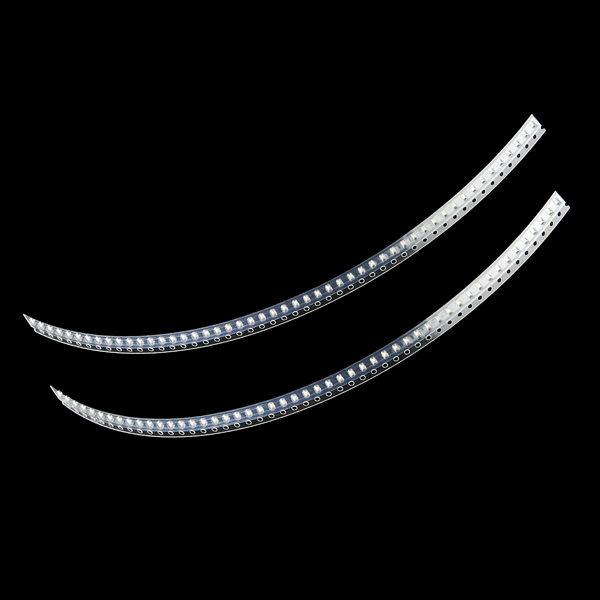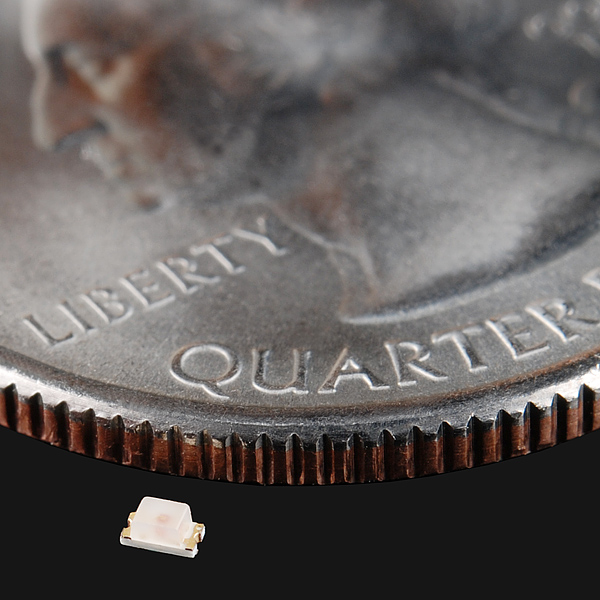SMD LED - 0603 Green (strip of 50)
There are more and more hobbyists taking advantage of surface mount technology these days. With affordable tools like hot air and hotplate reflow ovens, electronics enthusiasts are shrinking their projects down to new levels of portability. Unfortunately, It's not always easy to get your hands on small amounts of SMD parts so here's a part that every project could use more of: tiny little LEDs.
That's right, each pack includes 50 tiny 0603 SMD LEDs in cut-tape packaging. These are great for status lights or for building really small LED matrices. Don't expect them to be super bright, they're basically the standard green LED that shows up on our Arduino boards and things like that, but they do come in super handy when you're tight on space. Heads up, there are no markings on the package to indicate polarity so you'll need to take care when placing them.
- Forward Voltage: 2.2 V
- Brightness: 15 mcd
SMD LED - 0603 Green (strip of 50) Product Help and Resources
Core Skill: Soldering
This skill defines how difficult the soldering is on a particular product. It might be a couple simple solder joints, or require special reflow tools.
Skill Level: Competent - You will encounter surface mount components and basic SMD soldering techniques are required.
See all skill levels
Core Skill: Electrical Prototyping
If it requires power, you need to know how much, what all the pins do, and how to hook it up. You may need to reference datasheets, schematics, and know the ins and outs of electronics.
Skill Level: Rookie - You may be required to know a bit more about the component, such as orientation, or how to hook it up, in addition to power requirements. You will need to understand polarized components.
See all skill levels
Comments
Looking for answers to technical questions?
We welcome your comments and suggestions below. However, if you are looking for solutions to technical questions please see our Technical Assistance page.
Customer Reviews
No reviews yet.




This is a good deal. About half the price of even the cheapest 603 green LED on Mouser if you were to get the bulk discount for buying 50.
I vote for more of these awesome cut-strip deals. (SMD transistors, anyone?)
It looks to me like there is a polarization mark visible from the top side. There is a small circle in the gold lead frame on the lower right corner of the part in the first picture. There doesn't appear to be a matching mark on the upper left corner, so this could be used as a polarity indicator, as long as there was not too much solder applied.
I agree. There is a clearly visible mark that indicates the orientation in the first photo. It may not work with their machine, but I have no doubt it is marked. I have a bunch of these I ordered from Digikey that are identical.
For those wondering about the polarity, there is a little green T on the bottom, with the positive pin by the head of the T. And beware, these guys are fragile. I managed to chip one with my SMD tweezers, although it still functioned.
Oh, that's what the green T is? I saw it in the diagrams in the datasheets of other LEDs on here and I thought it was the shape of the part that actually emits the light.
no data sheet? unusual...also: any chance of having a similar offer for 0603 red leds?
All this talk about polarity markings when all you really need is a good DMM...
what's their current rating?
nvm
Noticing that as of yet there are neither matching smd resistor strips in the related products nor a datasheet for the LED's (only brightness and voltage(!?) listed), I must ask: at what amperage do these become one-time-use diodes?
These are supposed to be the same as the LEDs that we use in production. If they are indeed comparable, which I imagine they are, they have a DC forward current of something like 20-25mA and an absolute peak current of 140mA. Hope that helps!
Yes it helped me very much indeed.
Can you take a picture of the TOP of the LED ? Like with no ANGLE. You can usually tell by looking at the actual die in the middle. Its not a pure round shape.
Assuming they follow the pattern of PTH LEDs, in the first picture it appears that the left side is the anode. If you look closely, you can just barely make out a wire coming out of the top and to the left pad. In PTH LEDs, that is usually the anode.
If there are no markings to indicate polarity, how do you figure it out? Experiment with really small voltages?
Are you sure there are no markings? Usually it is an arrow on the underside. Sometimes it is some other indicator. Even if there was no marking I'd still buy them you can always find a way to ID the polarity. These days I'm tending to test polarity with a SMD tester to be sure.
Elektor just had a mention of the fact that there isn't much standardization of such markings.
This is exactly the case. Plus, once populated, we can't see the bottoms.
Any multimeter should work just fine. Just use the diode test function. Also, there's a very small indication on the bottom. Our optical inspector can't see the bottoms though :-)